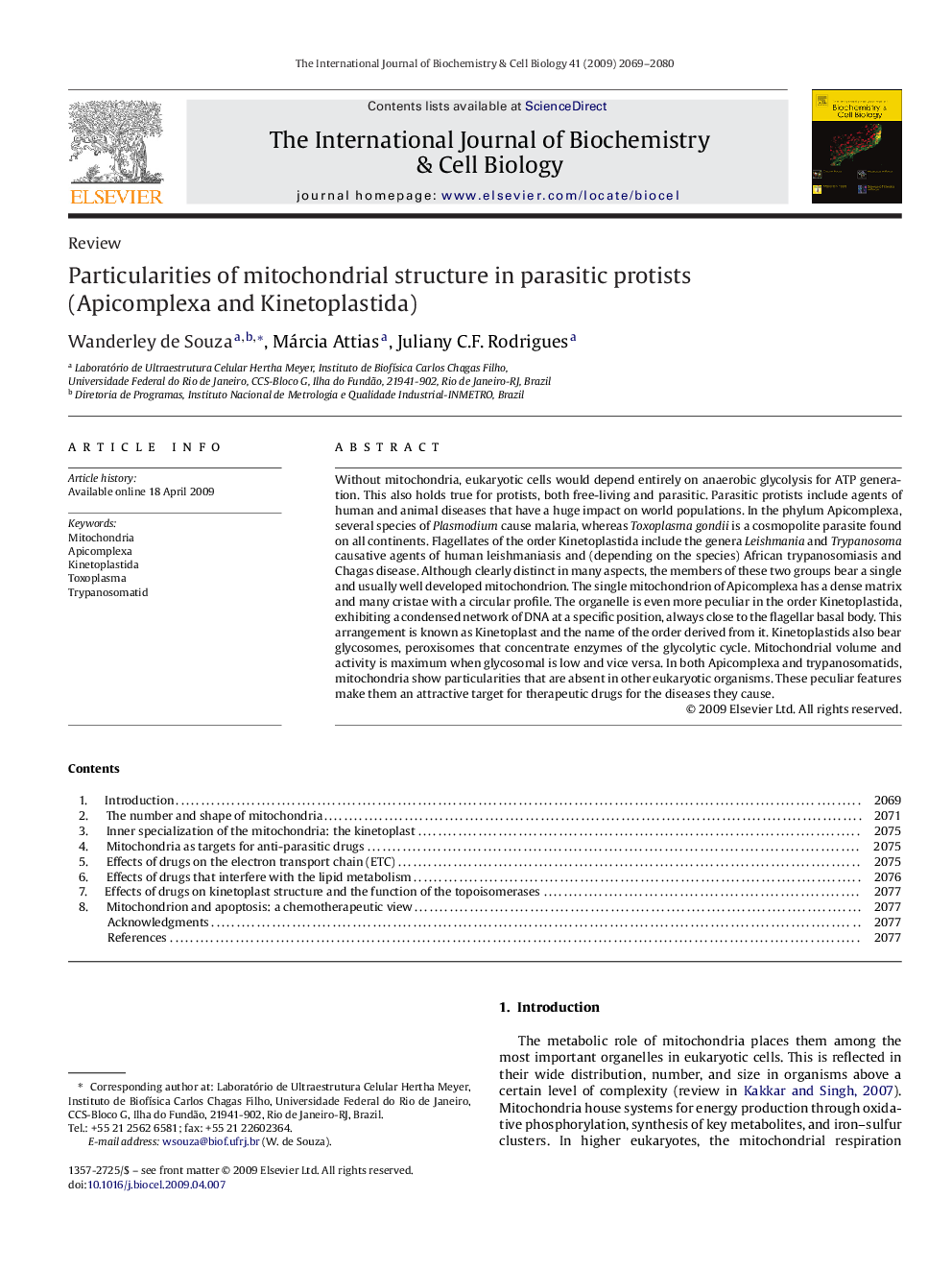| کد مقاله | کد نشریه | سال انتشار | مقاله انگلیسی | نسخه تمام متن |
|---|---|---|---|---|
| 1984083 | 1539949 | 2009 | 12 صفحه PDF | دانلود رایگان |
عنوان انگلیسی مقاله ISI
Particularities of mitochondrial structure in parasitic protists (Apicomplexa and Kinetoplastida)
دانلود مقاله + سفارش ترجمه
دانلود مقاله ISI انگلیسی
رایگان برای ایرانیان
کلمات کلیدی
موضوعات مرتبط
علوم زیستی و بیوفناوری
بیوشیمی، ژنتیک و زیست شناسی مولکولی
زیست شیمی
پیش نمایش صفحه اول مقاله

چکیده انگلیسی
Without mitochondria, eukaryotic cells would depend entirely on anaerobic glycolysis for ATP generation. This also holds true for protists, both free-living and parasitic. Parasitic protists include agents of human and animal diseases that have a huge impact on world populations. In the phylum Apicomplexa, several species of Plasmodium cause malaria, whereas Toxoplasma gondii is a cosmopolite parasite found on all continents. Flagellates of the order Kinetoplastida include the genera Leishmania and Trypanosoma causative agents of human leishmaniasis and (depending on the species) African trypanosomiasis and Chagas disease. Although clearly distinct in many aspects, the members of these two groups bear a single and usually well developed mitochondrion. The single mitochondrion of Apicomplexa has a dense matrix and many cristae with a circular profile. The organelle is even more peculiar in the order Kinetoplastida, exhibiting a condensed network of DNA at a specific position, always close to the flagellar basal body. This arrangement is known as Kinetoplast and the name of the order derived from it. Kinetoplastids also bear glycosomes, peroxisomes that concentrate enzymes of the glycolytic cycle. Mitochondrial volume and activity is maximum when glycosomal is low and vice versa. In both Apicomplexa and trypanosomatids, mitochondria show particularities that are absent in other eukaryotic organisms. These peculiar features make them an attractive target for therapeutic drugs for the diseases they cause.
ناشر
Database: Elsevier - ScienceDirect (ساینس دایرکت)
Journal: The International Journal of Biochemistry & Cell Biology - Volume 41, Issue 10, October 2009, Pages 2069-2080
Journal: The International Journal of Biochemistry & Cell Biology - Volume 41, Issue 10, October 2009, Pages 2069-2080
نویسندگان
Wanderley de Souza, Márcia Attias, Juliany C.F. Rodrigues,